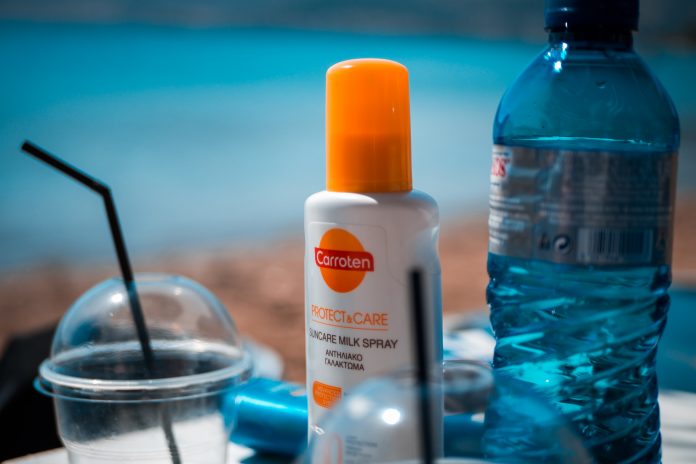“Make sure you put on your sunscreen” your parents shout to you as you run outside to soak up some vitamin D.
We all know we should be wearing sun protection on hot days. Coating our arms and legs in cream that smells like summer, not forgetting to cover vulnerable noses and ears. This is something taught to us early on: we must protect our skin from overexposure to the sun. But we don’t bring that logic into everyday life.
In the UK, most of us don’t wear sunscreen on a daily basis because the weather is simply not hot enough to warrant it. However, dermatologists have repeatedly suggested that this way of thinking needs to be changed. We should be wearing sunscreen every single day, rain or shine.
The reason we wear suncream is to create a barrier on our skin from harmful UV rays. When it’s sunny, the UVB rays—those responsible for burning your skin—are more prevalent. However, what many people fail to realise is that UVA rays are pretty constant throughout the year; these are shorter wavelength rays linked to skin ageing and cancer. They can penetrate through cloud cover and still cause damage, even if it looks overcast. UV rays are thought to be responsible for skin cancer with up to 80% of cases being preventable.
As a white woman with vitiligo, I have always been more focused on the damage UV rays can have. Vitiligo is an autoimmune disease that causes your white blood cells to attack the melanocytes in your skin, preventing pigmentation. Most famously, model Winnie Harlow raises awareness for this condition through her career and striking skin.
There is extensive research into whether or not vitiligo affects your risk of skin cancer. While some research suggests that vitiligo reduces your risk of melanoma because there is no melanin in this skin, others show that there is no difference in your likelihood of developing non-melanoma cancers. In my experience, that patch of skin is far more susceptible to burns. Even if I am careful, my arm will inevitably turn bright red after sun exposure. This has forced me to embrace the fact I desperately need to wear sunscreen.
However, I still wasn’t applying this to my daily routine and I certainly wasn’t applying it to my face, which is free from vitiligo patches. Many of us forget about our face when we apply sun protection, if we apply any at all. In her book, The Skincare Bible: Your No-Nonsense Guide to Great Skin, Dr. Anjali Mahto discusses how crucial daily sunscreen is, especially on your face. She says, “the sun remains the biggest cause of premature and accelerated skin ageing.” If worrying about cancer isn’t enough to push you to wear daily sunscreen, think of the wrinkles you might save your future self from. It may not reverse the sands of time but it can prevent further damage, which is crucial to keeping your skin healthy.
Skincare is so often focused on surface issues like acne or other perceived flaws but we forget that it is an organ and we should treat it with the care we give our heart and brain. Introducing sunscreen into your routine will do more for your skin in the long run than all the salicylic acid and activated charcoal in the world.
Regardless of if you’re protecting your skin for anti-ageing purposes or cancer prevention, getting into good habits now will help as the year progresses and UVB becomes more prominent too. Skincare shouldn’t be about erasing any flaws, it should be about actually caring for your skin. It’s more than skin deep.
Words by Danni Scott
This article was published as part of The Indiependent‘s May 2021 magazine edition.
Support The Indiependent
We’re trying to raise £200 a month to help cover our operational costs. This includes our ‘Writer of the Month’ awards, where we recognise the amazing work produced by our contributor team. If you’ve enjoyed reading our site, we’d really appreciate it if you could donate to The Indiependent. Whether you can give £1 or £10, you’d be making a huge difference to our small team.
